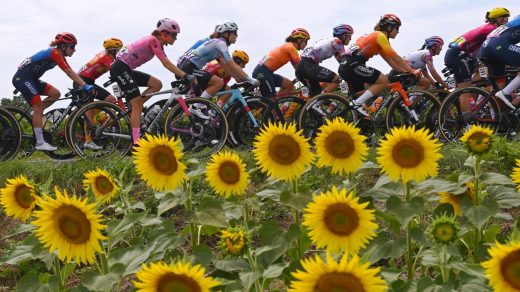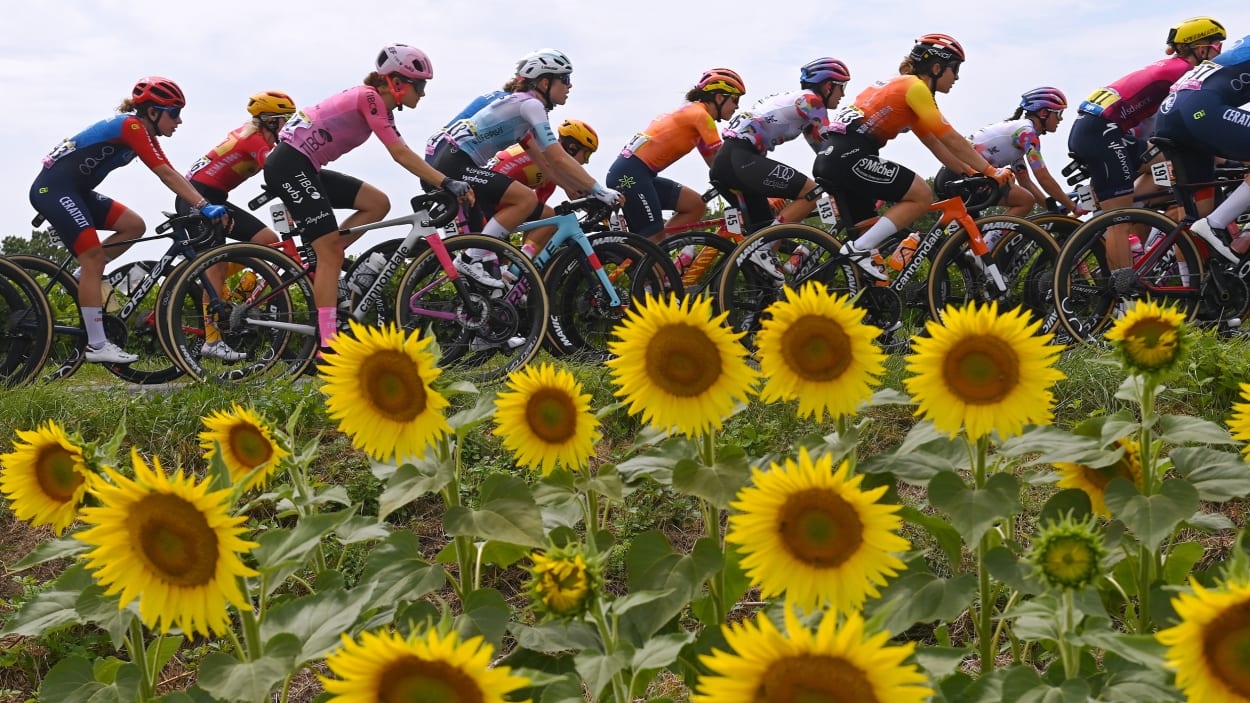Women are finally racing in a Tour de France—here’s what took so long
By Lyndsey D’Arcangelo
The day before the start of the Tour de France Femmes on July 23, professional cyclist Ashleigh Moolman Pasio was lying on a massage table in Clermont-Ferrand, France, marveling at the amenities around her. Thanks to the sponsors of her cycling team, AG Insurance – Soudal Quick-Step, she would be competing in the women’s version of the famous cycling race across France accompanied by media representatives, trainers, buses, trucks, and at least five team cars.
In addition to Moolman Pasio, some 154 riders for 22 teams had gathered to participate in the 596.7-mile race, which would take place across eight stages, including the 110-mile ride from picturesque Cahors to Rodez, in the Occitanie region, and the grueling mountain climb through the Pyrenees to reach the famous summit of Tourmalet. The race had signed on a half-dozen sponsors, including the virtual cycling platform Zwift as a lead sponsor, and spectators were expected to line the route.
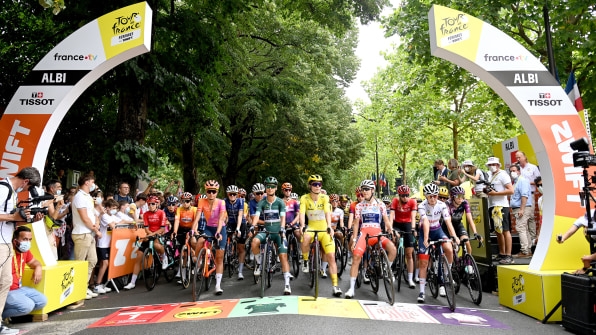
A 37-year-old rider from South Africa, Moolman Pasio has been involved at the highest level of cycling for 14 years. But she had never before seen such enthusiasm and support for her sport.
The Tour de France Femmes is a 2-year-old race, but one that’s been a long time coming. Its emergence reflects a surging interest by investors, sponsors, and others in professional women’s sports, including—finally—the highest levels of cycling.
Though the men’s Tour de France debuted in 1903, it wasn’t until 1984 that a woman’s version was created. (A one-off event was initially held in 1955.) The women’s Tour consisted of 18 stages and covered 670 miles, running concurrently alongside the men’s race. Marianne Martin, an American cyclist, won the race. She was awarded $1,000 for efforts. French cyclist Laurent Fignon received more than $100,000 for winning the men’s race.
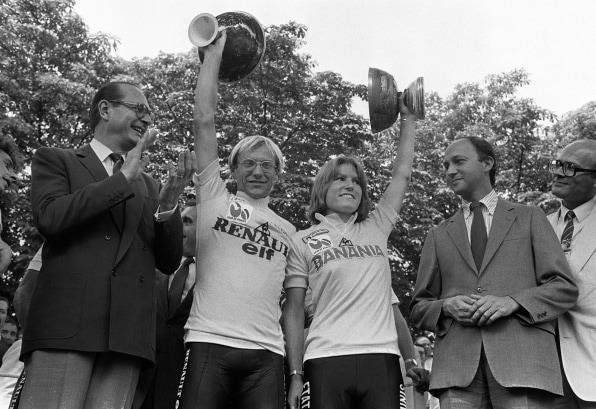
The official women’s Tour de France lasted just five years. Like most women’s sports, women’s cycling didn’t receive enough support and investment. Attempts to carry on the race were met with financial difficulties, lack of media coverage, unwilling sponsors, and sexism. It was rebranded multiple times under different names, but never caught on.
In 2009, a group of professional women cyclists formed La Tour Entier, an activist organization to advocate for women in their sport. They began applying pressure on the Amaury Sport Organization (ASO)—the company that owns, designs, and organizes top international sporting events, including the Tour. For a while, it resisted: “The message that we received over and over again was that it didn’t make business sense to have a women’s race,” Moolman Pasio recalls. “It wouldn’t bring in sponsors and broadcasting rights.”
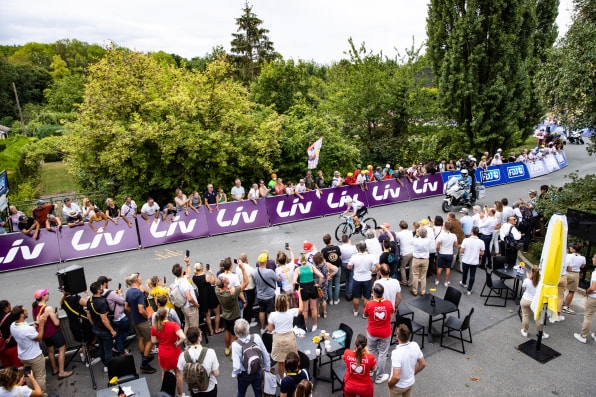
That began to change in 2020, during the height of the COVID-19 pandemic. That July, the ASO partnered with Zwift, the cycling and running training platform, to hold a virtual Tour de France while the world was shut down. Notably, the platform invited women to participate in their own Tour.
“It was the first time ever that women experienced equality in connection to the Tour de France name and brand,” Moolman Pasio says. “We raced the same stages and had equal exposure. That was really the turning point.”
At the same time, women cyclists had been growing their presence and reach on social media, a data point that ASO couldn’t help but notice. “These women have tremendous followings. That’s still meaningful,” says Cassondra Spring, a global brand manager for Liv Cycling, a bike and cycling apparel company, and a major sponsor of the Tour de France Femmes. “It doesn’t take much to recognize that you have a lot of strong interest in the sport, despite not having a lot of broadcasting opportunities. Seeing that is a proof point for organizations like the ASO.”
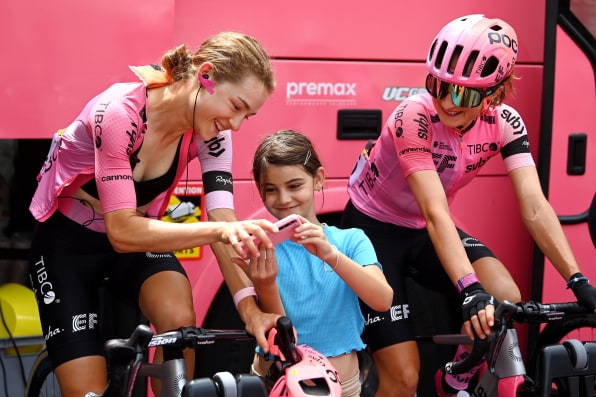
In July 2022—more than three decades after Martin’s unprecedented (and unheralded) win—the women’s race reemerged as the Tour de France Femmes avec Zwift. At 65 years old, Martin was in Paris to support a new generation of women cyclists. The race consisted of 144 participants across 24 teams competing through eight stages across 596.7 miles, and was broadcast live in 190 countries on a variety of networks.
It was a massive success.
Some 23.2 million people watched the race unfold, averaging an audience of 2.9 million people per stage, according to a study from Nielsen Sports that was commissioned by Zwift. (France drew the largest viewership, followed by Spain and Germany.) Social media interaction between fans and riders grew 300% from 2021 to 2022 as a result of the exposure.
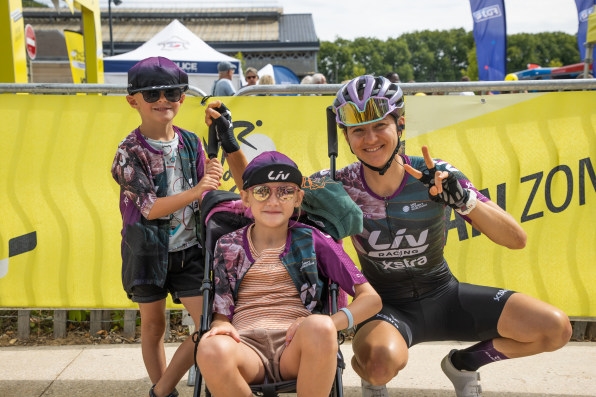
As with last year, the 2023 Tour is being broadcast in 190 countries with 2.5 hours of coverage per day, though accessibility in the U.S. lags behind. The Tour is available to watch live only via NBC’s Peacock paid streaming service.
Compensation is also still a prevailing issue. For the men’s Tour, the winner takes home 500,000 euros (close to $552,000), and an additional 2.5 million euros (nearly $2.8 million) in prize money is distributed to riders throughout the race. For the women’s Tour, the winner gets 50,000 euros (roughly $55,000), and the prize pool is 250,000 euros (not quite $276,000).
“Organizations like the Cyclists Alliance are working toward equal prize money,” says Spring from Liv Cycling. “There have been fundraising campaigns and brands that have pledged to pay out more. I’m seeing incremental change. I’m hopeful there can be big change.”
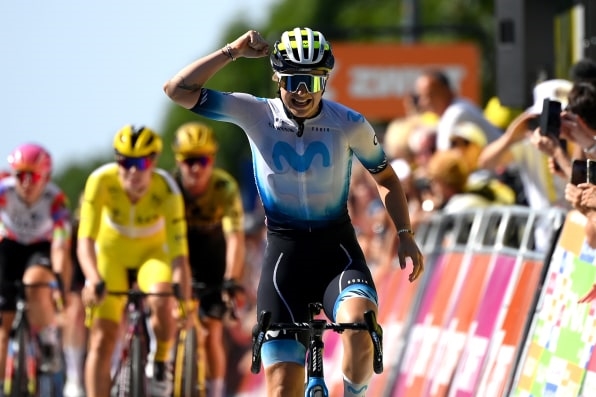
Despite the financial inequities, the growing appetite and support for women’s cycling is palpable on the ground in France. Throughout the race fans lined the roadways, clanging the traditional cowbells, cheering on the riders during the climbing stages, and came out in droves to greet them at the finish lines.
The final stage of the race will be held on Sunday, with cyclists competing in the individual time trial as they glide into the history-rich city of Pau.
For Moolman Pasio, who was in second place going into the final weekend of the race, it all started when Zwift decided to throw its weight behind the sport. “We needed a really powerful company or brand to put themselves out there and back women, first and foremost,” she says. “That’s what Zwift did for women’s cycling.”
(10)

